- Home
- Diane Fanning
Under the Knife Page 2
Under the Knife Read online
Page 2
All hope of an innocent explanation fled at the sight of the newspapers piling up at Maria’s door. They found the building manager, but he would not grant access to any tenant’s apartment without the assistance of the police.
Orlando and Rafael walked over to the 54th Street station of the New York Police Department. They returned with two female officers. The police women forced the door open. Inside, there were no signs of foul play—nothing to indicate forced entry. Orlando went straight to the spot where Maria stored important papers and discovered that even her passport was in the right place. The police review only confirmed what the emotional family saw: the ordinary sight of a slightly disheveled Spartan apartment, that of a woman who placed little value on material possessions. Maria’s purse was missing, as were a pair of gray sneakers. All else appeared to be in place.
IN NEWARK, DEAN FAIELLO WAS STOCKPILING BAGS OF CONcrete. Friends Greg Bach and Mark Ritchey both purchased bags at Home Depot for him. Some were needed for repairs to the home, but Greg noticed the excess and worried about how they were going to dispose of all those heavy sacks when it was time to move. They couldn’t be put in the trash. Just what do you do with leftover bags of concrete? he wondered. He hoped that moisture didn’t turn them into heavy, hardened blocks of dead weight before it was time to get rid of them.
Dean’s neighbor Dr. Goldschmitt finally caught up with Dean and asked about the woman who was in medical distress.
“She came out of her convulsions, was fine and went home,” Dean said.
David Goldschmitt felt an immense sense of relief.
Dean ran into Martin Mannert, the accountant friend he called on April 13. Dean said Maria was fine. “I took her to St. Vincent’s,” he said, “and all was well.”
MARIA’S BROTHER JUN, A 42-YEAR-OLD ENGINEER, AND HER sister Tes Lara, a 39-year-old dentist, landed at JFK International Airport on Good Friday, April 18, at 3 P.M. Weary from their long flight from the Philippines, they were dismayed to find that Maria was not there to meet them. They waited until 5 before contacting other family members, looking for their little sister.
Missing, they were told. Maria was missing. Jun and Tes learned that, while they were in flight to the States, other family members spent the day calling hospitals to no avail. When their cousins wanted to file a missing persons report, police told them to hold off for a week, the standard waiting time for a missing adult. Tes and Jun were not willing to linger. It was time to take the next step—to push it, if necessary.
With their uncle, Jose Navarro, Maria’s siblings went to the Midtown North NYPD station on 54th Street to file the report. Initially, Maria landed on the long unfortunate list of the missing—just one more lost individual of the 18,400 people who’d disappeared in New York City in the first five months of 2003. Jose convinced Officer Ponce that Maria’s disappearance was not an ordinary case of someone not wanting to be found—the circumstances justified an immediate investigation.
Ponce referred the family to Detective Joseph Della Rocca. The investigator accompanied Jose, Tes and Jun to Maria’s fourteenth-floor apartment. After speaking to the building manager, they entered Maria’s home.
Again, there was no obvious evidence of foul play—no forced entry, no indication of a struggle—but nothing felt right. For Tes and Jun, the subtle signs were alarming. Meticulous and neat, Maria would never leave her place in such disarray unless she intended to return immediately. Soiled dishes piled in the sink. Fresh grapes lay out on the counter. Papers sprawled across the kitchen table. Leftovers in the refrigerator and open blinds in one window further indicated that Maria did not intend to be away from her apartment for long.
None of it made any sense.
Hoping against hope, the family made the rounds of Manhattan hospitals. They looked in on every Jane Doe in each facility. Still, no sign of Maria. No word from Maria.
On Sunday, Jose and Jun looked on the Internet for clues. They found a credit report in which Maria used the name Marisol. They found other documents from the time just after she got her United States citizenship with this name, too. Once again, calls went out to all the hospitals in the area. This time, the family asked for Marisol Cruz.
ACROSS THE HUDSON RIVER, DEAN FAIELLO PREPARED HIS home for sale. He had lived there for seventeen years. Before Maria’s death, he had faced serious financial problems. Now impending foreclosure made the sale mandatory. Unaware of anything but Dean’s economic distress, friends and neighbors pitched in to help the adorable, charismatic doctor with home improvements for the sale, and then with cleanup for the move.
Dean’s current boyfriend, Greg Bach, spent May 27, 2003, removing discarded items from the home and depositing them in a rented Dumpster on the sidewalk. At 2 that afternoon, he spotted Dean in the carriage house. The upper level of the old white building was rented out as an apartment. The lower level, where Dean now stood, was used as a garage and, although it was narrow, it had enough room to house three cars. Now, though, a little red wagon could not have parked inside. Dean stored belongings there as he emptied the house, packing the space full. Boxes and furniture were piled from floor to ceiling, wall to wall. Only a narrow passageway to the storage closet at the back of the structure remained open, and it was not easy to negotiate.
Dean filled a large plastic container with bags of Quikrete concrete mix. “What are you doing?” Greg asked.
“Gotta fix the plumbing.”
Odd answer, Greg thought, and shrugged as he went back to work. Dean—a man who preferred coaxing acquaintances or hiring professionals to doing any hard labor himself—worked with surprising dedication in the carriage house. He mixed concrete and poured enough to build a platform in the storage closet. He slid a suitcase—enclosed in a garbage bag and taped shut—into the wet concrete. In it were the earthly remains of Maria Cruz. The suitcase wiggled as it rested on a semi-solid platform of gray. Dean pushed the container down into the sludge as far as he could, then covered it with more concrete.
Around 4, Greg stepped into the doorway of the carriage house and saw Dean smoothing out the surface with a trowel. “What are you doing? Can I help?” Greg asked.
Dean flipped into instant hostility. “Would you get outta here? Leave me alone. Go away. Go do something else.”
Greg went back into the house. He thought Dean’s behavior was bizarre, but blamed it on the recent deterioration of their relationship. Lately, Dean flew off the handle at the slightest provocation. At this point, Greg found his tantrums almost amusing.
On a perverse impulse, Greg returned to the garage, intending to agitate Dean again. He stood behind him and asked, “Whatcha doin’?”
Again Dean went off on him. As he ranted, Greg laughed in Dean’s face.
THE NEXT DAY, THE SALE OF THE HOUSE IN NEWARK CLOSED. With a little help from his friends, Dean sold the home for $423,000—close to the initial asking price of $450,000 and substantially more than what he paid for it.
Dean moved in to the third-floor apartment of Mark Ritchey’s house on Highland Avenue, just two blocks up from the corner of Elwood and Ridge where Dean’s former residence stood. Mark’s home—with its large round columns and strikingly decorated porch and lawn—sported an artsy look that set it apart from the more traditional appearance of its stodgy neighbors.
The new owner of Dean’s home—a property surrounded by fifteen-foot-high wrought-iron fences enclosing two residential buildings and a carriage house—thought he had gotten a good deal on an historic home. He had no idea of the history hidden in a sloppy slab of concrete in the storage closet of the carriage house. No clue that an American dream had died and lay buried only yards from where he and his girlfriend slept.
CHAPTER THREE
THE PHILIPPINES POSSESS A RICH TRADITION OF FOLKLORE. Maria Cruz was born in an environment filled with folk tales, passed down orally from one generation to the next. It was a heritage she shared with all Filipino children, whether they were born on the islands or in Hong Kong, the
United States or elsewhere.
One story that speaks strongly to their pride and sense of uniqueness is a tale of the creation of man. God molded the first man and popped him into His celestial oven, the story claims. He left this first creation in the oven too long. This man was dark and overdone. God placed him in Africa.
God tried again. This time, He did not leave His creation in the oven long enough. This man was pale and pasty, and God placed him in Europe. On the third attempt, God got it just right. A man with golden skin—perfectly baked. God placed this man in the Philippines.
The golden child, Maria Pilar Cruz, came to earth on March 9, 1968. Her parents, Rudolfo and Irenea Cruz, had five children—one boy and four girls. Maria was nicknamed Ate Pipay. Based on regional tradition, this name indicated that she was the family’s fourth daughter. The Cruzes raised their children in the Manila area of the Republic of the Philippines.
The country encompasses more than 7,000 tropical islands, stretching more than 1,100 miles through the southwest Pacific Ocean. Some of these land masses are nothing more than piles of jagged rock or dank swamplands. In fact, 4,300 of the islands don’t even have names.
The total land mass is roughly equivalent to the combined size of Wisconsin and Michigan, but the population easily outstrips those two states. At the time of Maria’s birth, more than 43 million people occupied the 730 inhabited islands of the Republic.
The main islands are places of stark contrasts. Sharp volcanic peaks rise as high as 9,692 feet above sea level. Rushing rivers plunge through forests filled with monkeys, bats, deer, wild hogs, pygmy buffalo, crocodiles, giant pythons, mouse deer and all manner of lizards and birds. In the lowlands, the wilderness yields to cultivated fields of rice, sugar, coconut palms, pineapples, sweet potatoes, abaca—Manila hemp—and more.
During Maria’s childhood, 70 percent of the population earned their living through agriculture. This gave the island nation much in common with its neighbors in Asia.
There were factors though, that set them apart. More than three centuries of Spanish control of the Philippines created a nation where four-fifths of the population belonged to the Roman Catholic Church, making it the only Christian country in the Far East.
Religion is more than a quiet matter of faith for most Filipinos. It dominates their lives, their families and their communities. That holds true for more than just the nation’s Catholics. When both Christianity and Islam arrived to the Philippines, those doctrines were superimposed over ancient traditions and became entwined in the cultural identities of the people.
Whether Catholic, Moslem, Protestant, Buddhist or animist, the rituals and ceremonies of their belief touch every day of the lives of most Filipinos. It also gives rise to many festivals throughout the islands, providing a host of multi-cultural reasons for all-out celebration.
Maria was born into a society where the Malay tradition of equality between men and women was a dominating force. The strong presence of Roman Catholicism over the centuries had at one time restrained some of that tradition, but by the time of Maria’s birth, the power of that oppression had greatly diminished.
In most Asian cultures at the time of Maria’s youth, the man of the house had undisputed authority over his household. In the Philippines, however, marriage was as close to an equal partnership between husband and wife as is found in Western countries. A woman’s right to inherit property was never questioned. Education and literacy levels for women tended to be higher than those for men. As in the Western world, though, the country continued to struggle with making equal pay for equal work a reality. A woman’s ability to advance in her career lagged behind that of a man.
Equal to the power of religion in Filipino life is the concept of kapwa. Translated from the original Tagalog, it means “shared being,” and it’s demonstrated in a strong desire for connection with others, and the belief that each person is inseparable from those who surrounded him. Everything—from joy to sorrow, from the mundane to the sublime—is meant to be shared.
The third force shaping Filipino society—and perhaps the strongest one of all—is the pivotal role of family. It provides strength, stability and security, extending to aunts, uncles, cousins, godparents, sponsors or patrons and close family friends. This all-compassing definition of family creates the social units of Filipino civilization. Rather than class structure, the primary identification of each individual is his familial group.
With the dominance of this structure comes the obligation of patronage. It is expected that family members receive preferential treatment in hiring. In fact, at many businesses, collective bargaining agreements specifically include this in company policy. The practice creates a cohesive work force, but it also leads to the abuse of privilege. This dark side flourished within the regime of Ferdinand Marcos. Filipinos elected him as president in 1965. The moment he took office he packed the government with appointments based on patronage with a total disregard for skill sets or knowledge level.
When Maria was a 1-year-old, he ran for re-election with promises of rice and roads. Marcos was the first president to win a second election since 1935 when self-rule was initiated in the island nation.
After that success, the domestic situation turned sour for Marcos. Filipinos opposed to the United States’ presence in their country—and to the government’s support of U.S. policy in Vietnam—led active protests. The Communist Party of the Philippines and the Moslem separatist movement grew stronger and spread unrest throughout the islands.
In 1972, Marcos declared martial law, claiming that anarchy was near. The following year—when his two-term limit was due to expire—Marcos suspended the constitution, dissolved the congress, arrested his political opposition and ended the long tradition of a free press. The new constitution anointed Marcos president and prime minister, and it postponed elections for an indefinite period.
Under his rule, a culture of corruption swamped the island. While those in power plundered the economy, Marcos spoke of the need for self-sacrifice. Comfortably entrenched, Marcos lifted martial law in 1981, but retained sufficient power to control a farcical presidential election, which he won with ease.
Benigno Aquino, Marcos’ chief political opponent, returned to the Philippines in 1983 after years in exile in the United States. He was shot in the back of the head minutes after his arrival at Manila International Airport. His assassination sparked the downfall of Ferdinand Marcos.
Corazon Aquino, widow of the fallen politician, became the focal point of the opposition to Marcos. In an attempt to regain political legitimacy, Marcos declared an early presidential election in February 1986. Corazon ran against Marcos, and though observers from the U.S. and an official government commission disagreed on the election results, the national assembly ultimately declared Marcos the winner.
Tens of thousands of civilians took to the streets in protest led by the military, who stood in opposition to the actions of the legislative body. Marcos, his family and his cronies fled to Hawaii on United States Air Force planes as Corazon Aquino became president. She was a role model for Filipinas all over the world. Maria Cruz was 18 years old at the time—and the impact of that woman’s rise to power strengthened Maria’s ambition and empowered her to succeed.
CHAPTER FOUR
MARIA’S BROTHER, JUN, FOLLOWED IN HIS FATHER’S FOOTsteps and became an engineer. Her older sister, Tes, studied dentistry. Maria, too, continued on to college. It was expected in their family, which, like that of most Filipinos, placed a high value on education. They believed it was the path to upward mobility both socially and economically.
Maria chose Miriam College in Quezon City for her undergraduate schooling. A recent addition to the Philippine landscape, Quezon City was President Manuel Luis Quezon’s vision of a town where the common man could find his place with dignity. To achieve his dream, the president purchased a vast estate and chartered the city in 1939. It became the capital of the Philippines in 1948.
Quezon City is nestl
ed in rolling hills, ten miles from Manila. Spacious parks and tree-lined boulevards beautify the town. One neighborhood, Loyola Heights, an upper middle class residential area, became home to Maria’s alma mater in 1952.
At the urging of the diocese, the sisters of Maryknoll Congregation in New York founded the institution as a teacher-training program in 1926. It became Maryknoll College in 1952 and developed into a liberal arts facility committed to the formation of women leaders and teachers.
In 1977, the Sisters turned ownership and management of the school over to Filipino laity and it was re-named Miriam College after the Aramaic name for the mother of Jesus. The new administrators established three major centers for curriculum development, research and community outreach: the Environmental Studies Institute; the Center for Peace Education; and the Women & Gender Institute.
When Maria arrived on campus, she entered a world where Christianity, specifically Catholicism, was central to the educational experience. The core value statement read: “Miriam College is committed to the values of truth, justice, peace and the integrity of creation.” It was also an environment where women’s ambitions were nurtured—where they were encouraged to strive and excel.
Maria took that philosophy to heart. She majored in Communications Arts and was considered the best student in her class. She didn’t tell her family that she’d earned cum laude honors. She surprised them with that revelation when she walked across the stage and accepted her diploma.
For a short while after graduation, she worked for the Ayala Corporation, a holding company. Ayala, founded in 1834, was one of the largest and most respected businesses in the Philippines.
But before the year was over, Maria decided to fulfill her ultimate dream—she moved to the United States. Her transition was easier than that of many immigrants because of the absence of a language barrier. Although Filipino—based on the native Tagalog dialect—is the official language of the nation, it is not spoken or even understood by large portions of the country. English is spoken in schools, the government and in business, making the estimated 86 million people living in the Philippines in 2004 the third largest group of English-speaking people in the world.

 Death on the River
Death on the River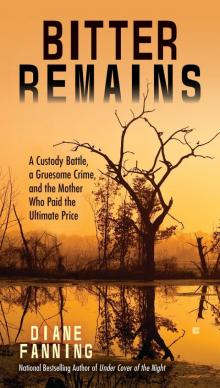 Bitter Remains
Bitter Remains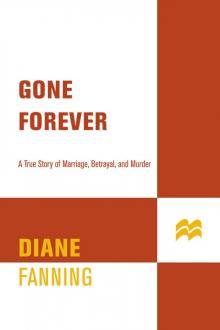 Gone Forever
Gone Forever Sleep My Darlings
Sleep My Darlings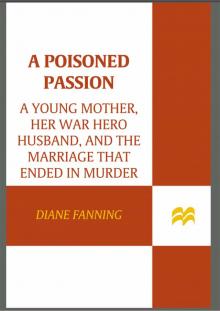 A Poisoned Passion
A Poisoned Passion Through the Window: The Terrifying True Story of Cross-Country Killer Tommy Lynn Sells (St. Martin's True Crime Library)
Through the Window: The Terrifying True Story of Cross-Country Killer Tommy Lynn Sells (St. Martin's True Crime Library)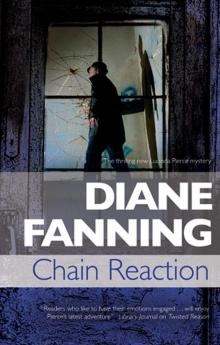 Chain Reaction
Chain Reaction Baby Be Mine
Baby Be Mine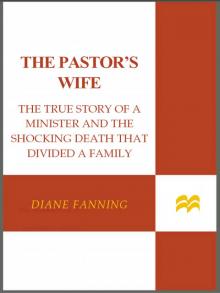 The Pastor's Wife
The Pastor's Wife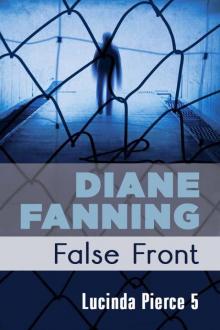 False Front (Lucinda Pierce)
False Front (Lucinda Pierce)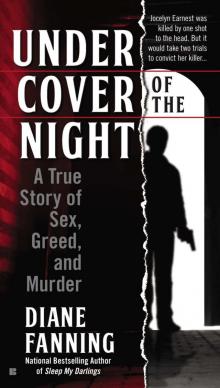 Under Cover of the Night
Under Cover of the Night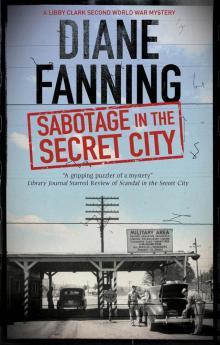 Sabotage in the Secret City
Sabotage in the Secret City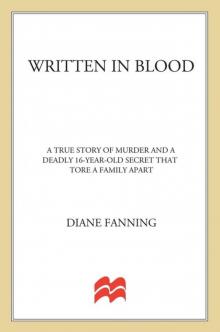 Written in Blood
Written in Blood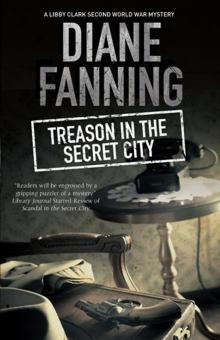 Treason in the Secret City
Treason in the Secret City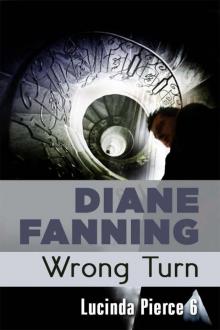 Wrong Turn
Wrong Turn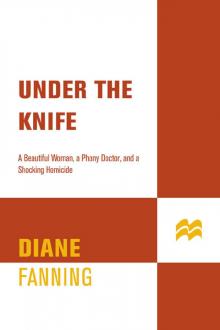 Under the Knife
Under the Knife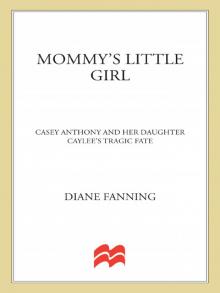 Mommy's Little Girl
Mommy's Little Girl Scandal in the Secret City
Scandal in the Secret City